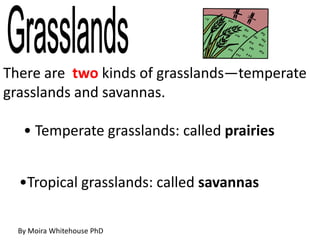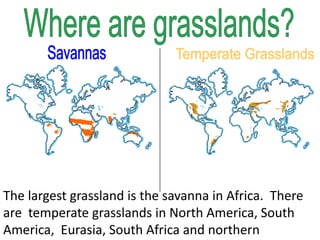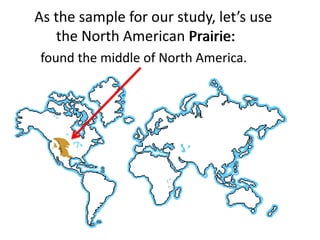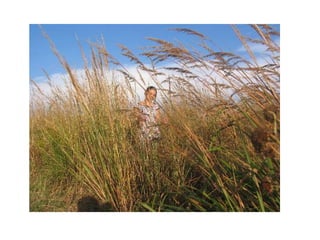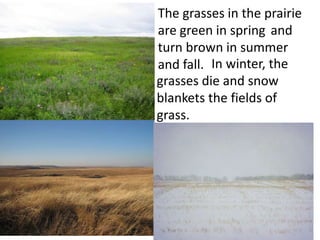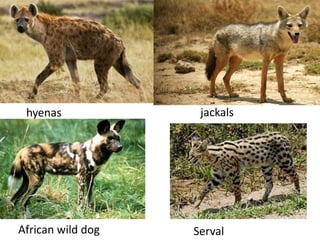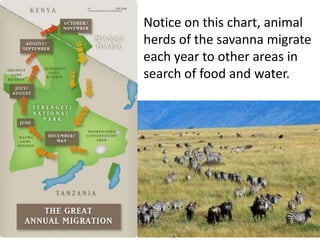There are two main types of grasslands: temperate grasslands and savannas. Temperate grasslands, also called prairies, are located in parts of North America, South America, Eurasia, South Africa, and have flat land with low rainfall. Savannas are tropical grasslands near the equator with scattered trees and distinct wet and dry seasons. Both grassland types support many herbivores and associated carnivores adapted to the open landscape.
